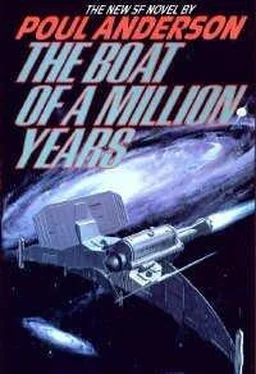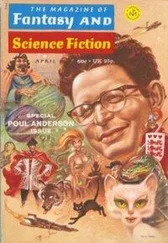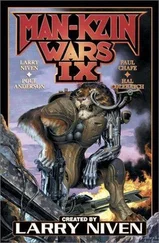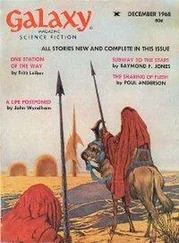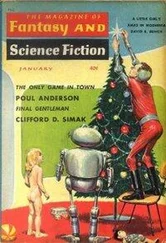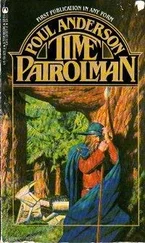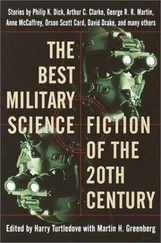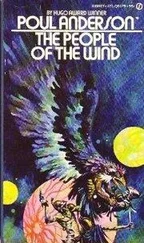Poul Anderson - The Boat of a Million Years
Здесь есть возможность читать онлайн «Poul Anderson - The Boat of a Million Years» весь текст электронной книги совершенно бесплатно (целиком полную версию без сокращений). В некоторых случаях можно слушать аудио, скачать через торрент в формате fb2 и присутствует краткое содержание. Год выпуска: 1989, ISBN: 1989, Издательство: Tor Books, Жанр: Фантастика и фэнтези, на английском языке. Описание произведения, (предисловие) а так же отзывы посетителей доступны на портале библиотеки ЛибКат.
- Название:The Boat of a Million Years
- Автор:
- Издательство:Tor Books
- Жанр:
- Год:1989
- ISBN:0-312-93199-9
- Рейтинг книги:3 / 5. Голосов: 1
-
Избранное:Добавить в избранное
- Отзывы:
-
Ваша оценка:
- 60
- 1
- 2
- 3
- 4
- 5
The Boat of a Million Years: краткое содержание, описание и аннотация
Предлагаем к чтению аннотацию, описание, краткое содержание или предисловие (зависит от того, что написал сам автор книги «The Boat of a Million Years»). Если вы не нашли необходимую информацию о книге — напишите в комментариях, мы постараемся отыскать её.
Nominated for the Nebula Award in 1989.
Nominated for the Hugo Award in 1990.
The Boat of a Million Years — читать онлайн бесплатно полную книгу (весь текст) целиком
Ниже представлен текст книги, разбитый по страницам. Система сохранения места последней прочитанной страницы, позволяет с удобством читать онлайн бесплатно книгу «The Boat of a Million Years», без необходимости каждый раз заново искать на чём Вы остановились. Поставьте закладку, и сможете в любой момент перейти на страницу, на которой закончили чтение.
Интервал:
Закладка:
The fragrances were like blossoms in spring. “Yes, yes,” Svoboda exulted. “The discovery of the ages.”
“Theirs more than ours,” Hanno said. “The aliens’, I mean. But we have to decide what to do about it.”
Tu Shan leaned forward, elbows on table, heavy shoulders hunched. “Well, what is the situation?” he asked lev-elly enough.
“We’re receiving the same message, repeated and repeated,” Hanno told them while he ate and gulped. “It’s from two sources, one closer to our path than the other. Quite likely there are more that we haven’t come in range of. If we continue on our present track, we may pick them up. The nearest is a couple of light-years from us. It appears to be on station relative to a line drawn between Sol and Phaeacia’s sun, roughly the path we’re following. Pytheas says that’s easy to do; just keep yourself from orbiting away. As I was saying while you were out, Corinne, everything suggests that the aliens sent robots to sit broadcasting continuously. A little antimatter would provide ample power for centuries.”
“The message is pictorial,” Wanderer interjected.
“Well, graphic,” Hanno proceeded. “You’ll all see it later. Often, no doubt, trying to squeeze extra meaning out of it. I suspect you’ll fail. No real images, just several ... diagrams, maps, representations. Transmission to a ship traveling at Einsteinian speed, a changing speed at that, must be a tough problem, especially when the aliens can’t know what our capabilities are for receiving and decoding— or how we think, or much of anything about us. Detailed pictures might be impossible for us to untangle. Evidently they composed the simplest, least ambiguous message that might serve. I would, in their place.”
“But what is their place?” Yukiko wondered.
Hanno chose to take her literally. “I’m coming to that. What we got, first, was a lot of light-points in three-dimensional space. Then little bars appeared next to three of them. Then we got those three points in succession—it must be same ones—each by itself with the bar enlarged so we could see vertical lines on it. Then the view returned to the light-points in general, with a red line between two of those that are marked. Finally another line appeared, from about two-thirds along the first one, offside to the third marked tight-point.
“That’s all. Each exposure lasts about a minute. The sequence finishes and starts over. After sixteen cycles, it becomes a plain series of flashes, that could just as well be rendered by dots and dashes in sound waves. This goes on for the same total time, after which we return to the graphics. And so on, over and over.”
Hanno sat back. He grinned a bit. “What do you make of h?”
“That isn’t fair,” Patulcius complained.
“No, don’t be a tease,” Aliyat agreed.
“Hold on.” Macandal’s eyes shone darkly bright. “It’s worthwhile making us guess. Bring more minds to bear on the problem.”
“The ship’s mind must already have solved it,” Patulcius said.
“Nevertheless— Lord, let’s have a little fun. I think those fight-points stand for stars, a map of this neighborhood in the galaxy. One of the three special ones has got to be Sol, the other Phaeacia Sun, and the third—where the aliens are!”
... “Right.” Wanderer’s tone quivered with an equal excitement. “The bars, are they spectrograms?”
“Brilliant, you two,” Svoboda said happily.
Wanderer shook his head. “Naw, it’s pretty obvious, though I do look forward to actually seeing it. A sending from the Others—”
Hanno nodded. “Pytheas ran through the astronomy database and confirmed those identifications,” he related. “The third was hardest, because the three-dimensional representation is on such a small scale. But by expanding the fractals as well as searching the records— Anyhow, it turns out to be a star on our port quarter, if I may speak two-dimensionally. About thirty degrees off our course and about three hundred fifty light-years from our present position. It’s type G seven, not as bright as Sol but not too unlike.” He paused. “It’s still less unlike that star in Pegasus, the one we believe may be the home of the nearest high-tech civilization to us, more than a thousand light-years.”
“Then they have come this far,” Yukiko said in awe.
“If they are from that civilization, if it is a civilization,” Svoboda reminded. “We know nothing, nothing.”
“What powers have they, that they know about us?”
“We’ve tried to guess, we two,” Hanno said. He drew breath. “Listen. Think. They—that third star—is about four hundred thirty light-years from Sol. That means it’s within the radio sphere of Earth. For a while, starting in the twentieth century, Earth was the brightest radio object in the Solar System, outshining Sol in that band. That was interrupted, you remember, and afterward people developed communications that didn’t clutter the spectrum so grossly; but the old wave front is still expanding. Even beyond Star Three, it’s still detectable if you have instruments as good as ours, which the aliens certainly do.
“Very well. However they got to Star Three, they soon found that Sol had a brilliant radio companion. Nobody has spotted that at Pegasi, the Mother Star, assuming that is where the aliens originated. It’s too distant; nothing from us will reach it for centuries. So the, uh, colonists or visitors at Three are on their own.
“Now take things from their viewpoint. In due course, Sol ought to be sending out ships too, if it hasn’t already begun. It will be especially interested in contacting the nearest neighbor high-tech civilization it can identify, Mother Star’s. The aliens could send robots to lie along the general path between those two. Our robots bound that way are smart and versatile. They would, at the least, beam word back to Earth. You recall they’re equipped to do that from space, as we aren’t, because they don’t boost all the while; tune touches them less than us. Unfortunately, I think, they must already have gone too far to acquire the signal—which indicates the aliens have not been at Three extremely long.
“There is another good possibility for the aliens. Sol folk should also be especially interested in stars like their own. Phaeacia Sun is that sort, and it lies in the same general, attractive direction as Mother Star. It’s much the nearest to Sol that fits both requirements. So the aliens sent robots to lie along that path too. We’ve encountered those.”
Silence closed down, eyes dropped in thought or stared at walls, until Aliyat said, “But robots went ahead of us to Phaeacia. Why haven’t they reported anything about this?”
“Maybe the messenger craft hadn’t gotten here when they passed by,” Patulcius said. “We don’t know when the messengers arrived.” He pondered. “Except that it must have been less than—four hundred thirty years ago, did you say, Hanno? Otherwise the aliens could have had robots at Sol by now.”
“Maybe they do.” Aliyat shivered. “We’ve been gone a long time.”
“I doubt it,” said Wanderer. “That would be one hell of a coincidence.”
“They might not want to, for whatever reason,” Macan-dal pointed out. “We’re completely ignorant.”
“You’re forgetting the nature of those robots at Pha-eatia,” Svoboda said. “They’re not like the ones bound for Pegasi in the wake of messages beamed beforehand—great, intelligent, flexible machine minds intended to attempt con-versation with other minds able to understand what they are. The Phaeacia robots were designed and programmed to go there and collect information on that specific planetary system. Almost monomaniacs. If they noticed these neu-trino bursts en route, they paid no attention.” She smiled sardonically. “Not their department.”
Читать дальшеИнтервал:
Закладка:
Похожие книги на «The Boat of a Million Years»
Представляем Вашему вниманию похожие книги на «The Boat of a Million Years» списком для выбора. Мы отобрали схожую по названию и смыслу литературу в надежде предоставить читателям больше вариантов отыскать новые, интересные, ещё непрочитанные произведения.
Обсуждение, отзывы о книге «The Boat of a Million Years» и просто собственные мнения читателей. Оставьте ваши комментарии, напишите, что Вы думаете о произведении, его смысле или главных героях. Укажите что конкретно понравилось, а что нет, и почему Вы так считаете.
